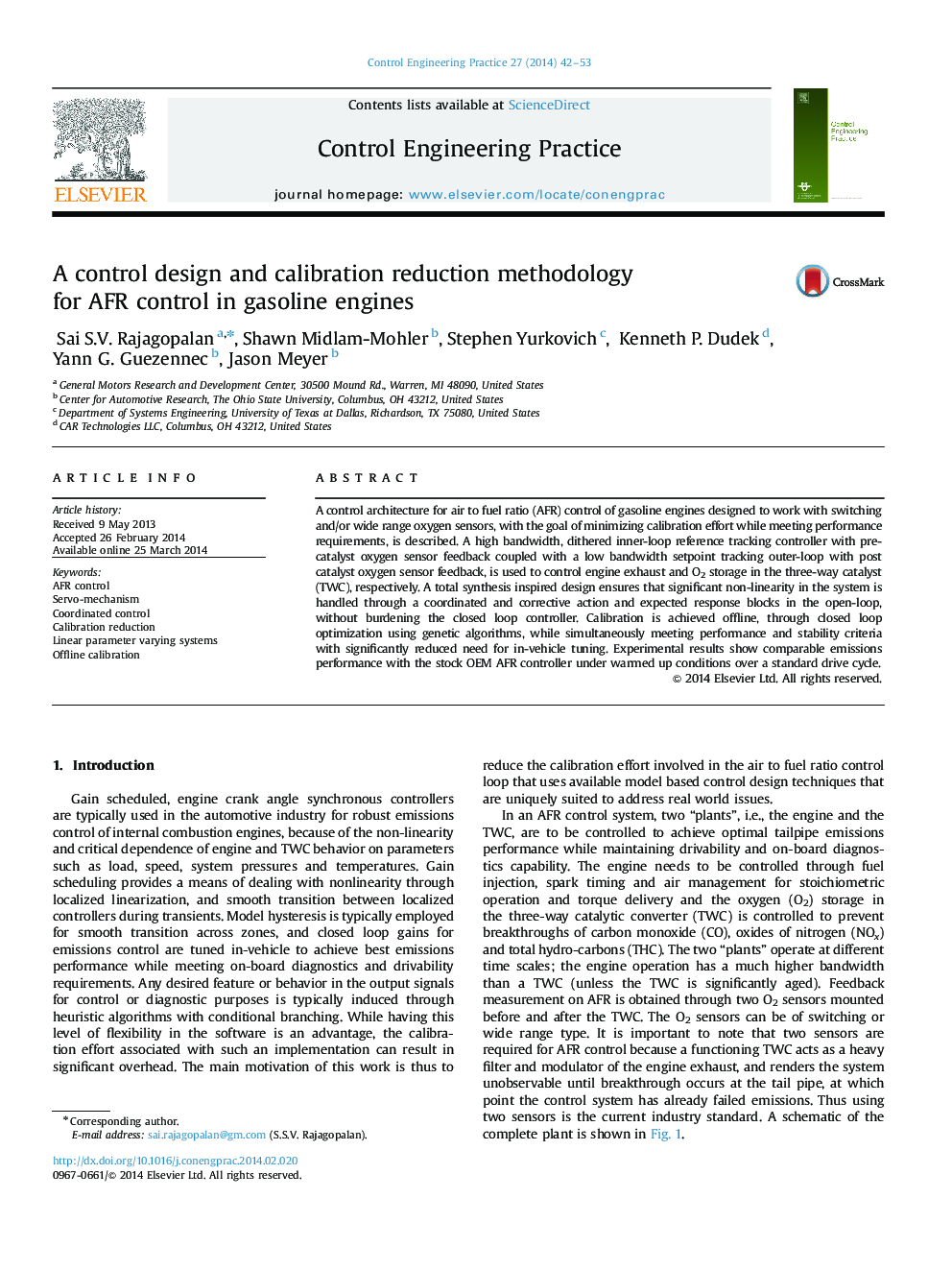| Article ID | Journal | Published Year | Pages | File Type |
|---|---|---|---|---|
| 699663 | Control Engineering Practice | 2014 | 12 Pages |
•We present an AFR control scheme which reduces calibration while meeting emissions.•Asymmetric switching and dithering is achieved in spite of variable plant delays.•Modularity in architecture supports multiple platform flavors without complexity.•Linear parameter varying design reduces calibration effort while guaranteeing stability.
A control architecture for air to fuel ratio (AFR) control of gasoline engines designed to work with switching and/or wide range oxygen sensors, with the goal of minimizing calibration effort while meeting performance requirements, is described. A high bandwidth, dithered inner-loop reference tracking controller with pre-catalyst oxygen sensor feedback coupled with a low bandwidth setpoint tracking outer-loop with post catalyst oxygen sensor feedback, is used to control engine exhaust and O2 storage in the three-way catalyst (TWC), respectively. A total synthesis inspired design ensures that significant non-linearity in the system is handled through a coordinated and corrective action and expected response blocks in the open-loop, without burdening the closed loop controller. Calibration is achieved offline, through closed loop optimization using genetic algorithms, while simultaneously meeting performance and stability criteria with significantly reduced need for in-vehicle tuning. Experimental results show comparable emissions performance with the stock OEM AFR controller under warmed up conditions over a standard drive cycle.
